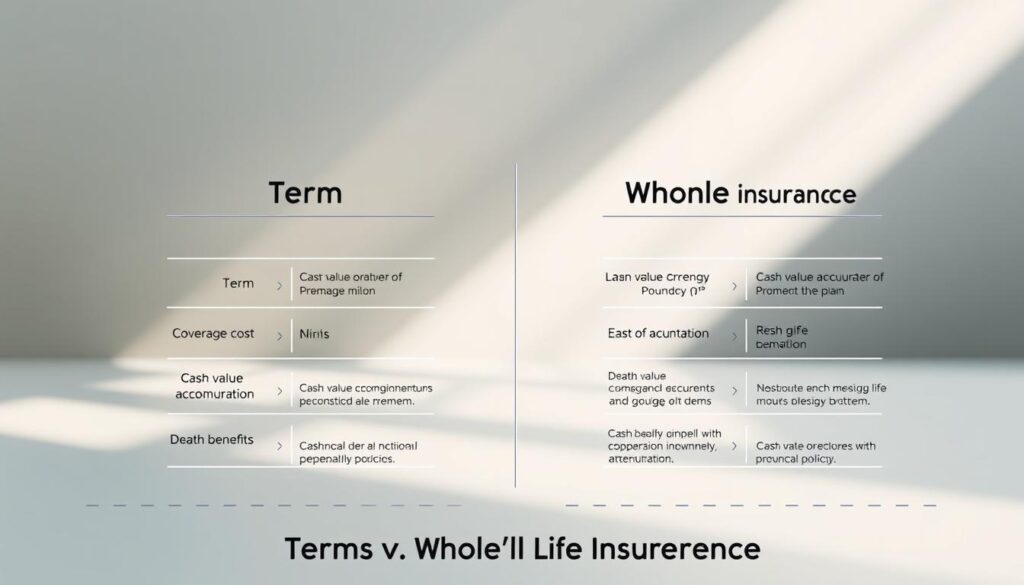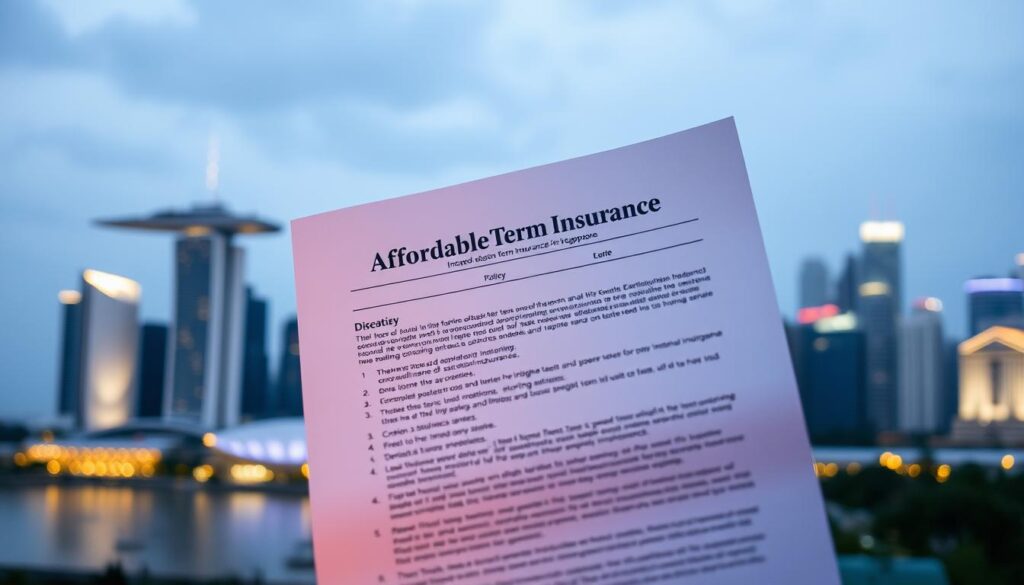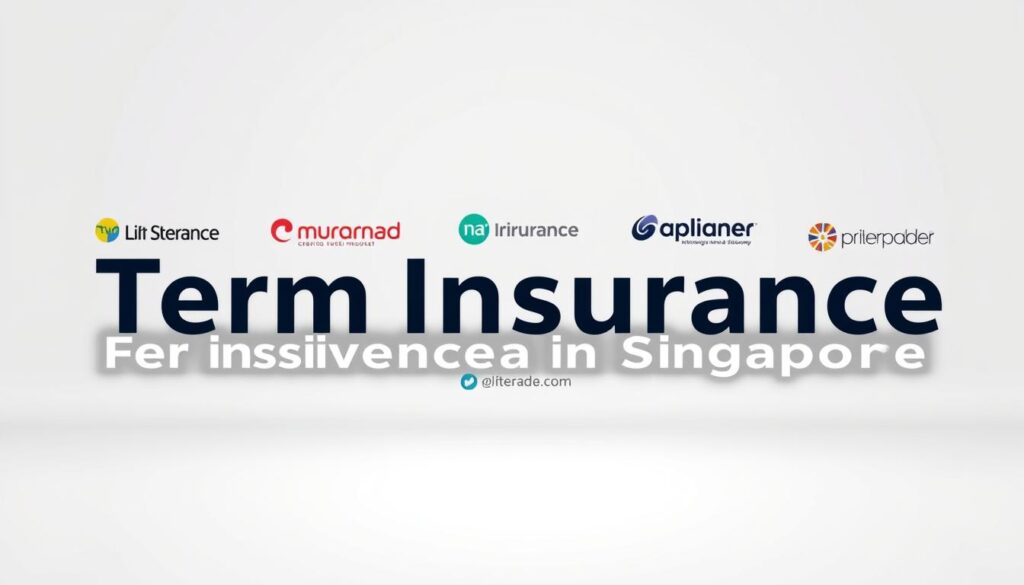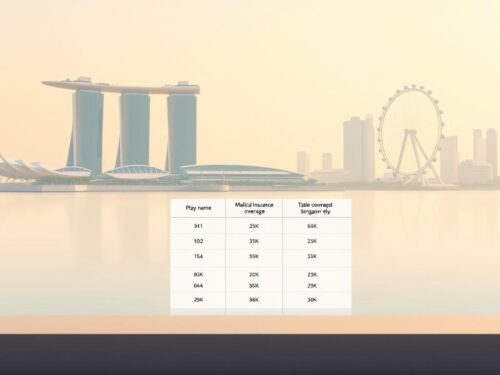Welcome to your complete guide for securing your family’s future with smart financial planning. We understand how important it is to find the perfect protection that fits both your needs and budget.
This guide will walk you through various options available from top providers. You’ll discover plans that offer excellent value with surprisingly low monthly premiums.
We’ll show you how these temporary protection plans can provide essential security during critical life stages. They ensure your loved ones are protected when they depend on you most.
Our detailed comparison highlights how these plans remain incredibly affordable while offering substantial coverage. You’ll learn the key differences between temporary and permanent options to make the best choice for your situation.
Key Takeaways
- Temporary protection plans offer substantial coverage at affordable rates
- Monthly premiums can be surprisingly low for comprehensive protection
- These plans provide essential financial security for your family
- They’re particularly valuable during critical life stages and responsibilities
- Top Singapore providers offer competitive options with various features
- Understanding different plan types helps you make informed decisions
- Proper coverage aligns with your financial obligations and future goals
Understanding Term Life Insurance in Singapore
Temporary coverage arrangements provide a clear path to securing your loved ones’ future during crucial life stages. These fixed-period plans offer pure protection without investment components, making them both affordable and straightforward.
A typical temporary protection plan covers you for a specific duration, usually between 5 to 40 years. Many options extend coverage until ages 65, 75, or even 85. The core concept is simple: you pay regular premiums, and if covered events occur during the active period, your beneficiaries receive financial support.
These plans differ significantly from permanent options that include cash value accumulation. The focus remains exclusively on death benefit protection, which explains the substantially lower premium costs. You’re paying only for the protection component without any savings or investment features.
Basic coverage typically includes payout for death from most causes, with standard exceptions like suicide within the first year. Terminal illness diagnosis is also commonly covered, providing support when it’s needed most.
Most temporary protection plans in Singapore offer coverage until age 75. If you pass away or receive a terminal illness diagnosis before reaching this age, your designated beneficiaries receive the full sum assured. This financial safety net ensures your family’s needs are met during difficult times.
If you outlive your policy period, the coverage simply expires without any cash value or refund. This pure protection approach is why premiums remain affordable compared to permanent alternatives.
Singapore insurers provide various term structures to match different needs:
| Term Type | Duration | Premium Structure | Best For |
|---|---|---|---|
| Renewable Terms | 5-10 years | Premiums may increase at renewal | Short-term needs or budget flexibility |
| Level Terms | Fixed duration (10-30 years) | Fixed premiums throughout term | Long-term financial planning |
| Age-Specific Coverage | Until age 65, 75, or 85 | Fixed or increasing premiums | Life stage protection |
These temporary plans are particularly valuable during your highest earning years. They provide essential financial security when your family depends most on your income. The simplicity of these arrangements makes them easy to understand and manage.
You pay regular premiums, and if covered events occur during the active period, your family receives the promised financial support. This straightforward approach eliminates confusion about investment components or cash values.
Choosing the right temporary protection plan depends on your specific circumstances, financial obligations, and future goals. Understanding these basic principles helps you make informed decisions about your family’s financial safety.
Term vs. Whole Life Insurance: Key Differences
Financial security planning involves choosing between temporary protection that expires and permanent coverage that lasts a lifetime. This decision impacts both your budget and long-term financial strategy.

Understanding these two main categories helps you select the right approach for your situation. Each serves different purposes with distinct advantages.
What is Term Life Insurance?
Temporary protection arrangements focus exclusively on pure security without investment components. They provide coverage for a specific duration, typically ranging from 5 to 40 years.
These plans offer substantial death benefit protection at remarkably affordable rates. Premiums remain fixed throughout the entire policy period.
If the insured passes away during the active term, beneficiaries receive the full sum assured. This includes coverage for death, terminal illness, and often disability.
The main advantage is cost efficiency. You get maximum protection per premium dollar spent.
These arrangements work well during high-responsibility periods like mortgage years or child-rearing phases. They provide essential security when financial obligations are greatest.
What is Whole Life Insurance?
Permanent protection plans offer lifelong security, typically extending to age 99 or 100. They combine death benefit coverage with cash value accumulation.
The cash component grows over time through guaranteed and non-guaranteed returns. If you outlive the policy, you receive these accumulated values.
Premium costs are significantly higher due to the dual nature of protection and savings. However, they offer limited pay options where premium payment periods are shorter than the coverage duration.
These policies often include multipliers that boost coverage during critical years. They provide both lifelong security and a savings component.
The choice between temporary and permanent protection depends on your budget, coverage needs, and financial objectives. Many people start with affordable temporary plans during early career stages.
They later transition to other financial products as their wealth and needs evolve. Understanding these differences ensures you make informed decisions about your family’s financial safety.
Why Choose Term Life Insurance?
Many Singapore residents discover that fixed-period protection offers an ideal balance of comprehensive coverage and budget-friendly pricing. This approach provides essential financial security during your most critical years without the complexity of permanent alternatives.

Temporary protection arrangements deliver maximum value for your premium dollars. They focus exclusively on providing security when your family needs it most.
Affordability and Lower Premiums
Fixed-period protection stands out for its remarkable cost efficiency. Premiums typically range from S$15.40 to S$34.12 monthly for substantial S$500,000 coverage.
This represents significant savings compared to permanent options. You can secure essential protection without straining your monthly budget.
The fixed premium structure allows for predictable financial planning throughout your policy duration. You won’t face unexpected increases that can disrupt your budget.
Young professionals, new parents, and homeowners particularly benefit from these affordable rates. They can maintain comprehensive security while managing other financial responsibilities.
Substantial cost savings—often 10-12 times cheaper than whole life options—free up funds for other goals. You can invest, save, or address immediate financial needs while maintaining essential protection.
Simplicity and Flexibility
Temporary protection plans offer straightforward understanding without complex components. You pay premiums for pure security without cash value calculations or investment features.
Policy terms clearly define coverage for death, terminal illness, and optional riders like total permanent disability. This transparency eliminates confusion about what your plan covers.
You enjoy flexibility in choosing coverage periods that match specific financial obligations. Options include mortgage terms, children’s education years, or until retirement age.
Temporary coverage means you only pay for protection during years when you actually need it. This avoids unnecessary lifelong premium payments that characterize permanent alternatives.
Customization options let you tailor coverage amounts and terms to your evolving needs. As your financial responsibilities change, your protection can adapt accordingly.
This combination of simplicity and flexibility makes temporary protection an attractive choice for many Singapore families. It provides essential security without complexity or excessive cost.
Factors to Consider When Choosing a Term Plan
Selecting the right protection arrangement requires careful evaluation of several important elements. Your choices today will shape your family’s financial security tomorrow.
Smart decisions begin with understanding how different factors affect your coverage and costs. Let’s explore the key considerations that should guide your selection process.

Coverage Amount and Duration
Determining the right protection level starts with calculating your financial responsibilities. Add up your mortgage balance, outstanding loans, and family living expenses.
Children’s education costs and ongoing financial support for parents should also factor into your calculations. This comprehensive approach ensures your loved ones maintain their lifestyle.
Policy length should match your longest financial commitment. Most people choose coverage until their mortgage clears or children become independent.
Common terms extend to age 65, as many arrangements become expensive beyond this point. Aligning duration with obligations prevents overpaying for unnecessary years.
Your Financial Obligations
Homeowners should prioritize their mortgage when calculating protection needs. Consider both the remaining balance and payment timeline.
Other debts like renovation loans, car financing, and personal borrowings require inclusion too. Your total sum assured should cover all these obligations completely.
Future expenses like children’s university fees deserve careful consideration. Education costs typically increase over time, so build in some buffer.
Monthly support for aging parents represents another important factor. If you provide regular allowances, ensure this continues through your protection.
Health and Lifestyle Factors
Your physical condition significantly impacts premium rates and approval chances. Pre-existing medical conditions may require additional underwriting.
Family health history also plays a role in risk assessment. Certain hereditary conditions might affect your options or costs.
Lifestyle choices like smoking dramatically increase premium expenses. Tobacco users often pay substantially more for identical coverage.
Income stability and future earning potential influence affordability throughout your policy term. Choose premium amounts that remain manageable during income fluctuations.
| Consideration | Impact on Choice | Practical Example |
|---|---|---|
| Mortgage Balance | Determines minimum coverage amount | S$500,000 mortgage = S$500,000 minimum sum assured |
| Children’s Ages | Influences policy duration | Young children = longer term needed |
| Smoking Status | Affects premium rates significantly | Smokers pay 50-100% higher premiums |
| Existing Coverage | Helps avoid overlapping protection | Review employer group plans first |
Additional riders like critical illness or total permanent disability coverage deserve evaluation. These enhancements provide extra security against specific health challenges.
Inflation and future cost increases should influence your sum assured decision. What seems adequate today might prove insufficient in 20 years.
Always review existing arrangements from employer group plans or other policies. This prevents duplicate coverage while identifying protection gaps.
“The right protection amount covers your debts and provides for your family’s future needs without creating financial strain today.”
For detailed comparisons of various options available in Singapore, visit our comprehensive comparison guide. This resource helps you evaluate different features and find the perfect match for your situation.
Remember that your needs will evolve over time. Regular reviews ensure your protection remains aligned with changing financial responsibilities.
Best Term Life Insurance Singapore: Top Provider Reviews
Singapore’s protection market offers diverse options from leading companies. Each brings unique features to meet different needs.
We’ve analyzed seven popular arrangements to help you compare strengths. These reviews highlight what makes each option stand out.

Singlife Elite Term: Flexible and Affordable
This flagship product delivers remarkable flexibility with various coverage periods. You can choose renewable options from five years up to age 99.
Perpetual discounts make it exceptionally cost-effective. Death and TPD coverage receives 30% off, while critical illness riders get 10% savings.
The basic arrangement includes protection for death and terminal conditions. Additional riders enhance security against various health challenges.
FWD Term Life Plus: Fuss-Free Online Experience
Digital convenience defines this completely online solution. Application and claims processing happen through user-friendly platforms.
Unique family support services add significant value. These include legal advice sessions worth $5,000 for policyholders.
The streamlined approach eliminates paperwork and speeds up approvals. It’s perfect for those preferring digital management.
Income Term Life Solitaire: Guaranteed Renewal
This option offers peace of mind through guaranteed policy renewal until age 100. You won’t face medical re-assessment at renewal dates.
Fixed terms range from 10 to 40 years. Alternatively, choose coverage until specific ages like 64, 74, 84, or 100.
The assurance of continuous protection makes it ideal for long-term planning. You maintain security without worrying about future health changes.
AIA Secure Flexi Term: Long-Term Coverage
Comprehensive protection extends up to 100 years with this arrangement. It includes terminal cancer benefit within base coverage.
Renewable periods come in 5, 10, 20, or 30 year increments. Alternatively, select coverage until ages 65 or 75.
The flexibility accommodates various life stages and financial responsibilities. It grows with your changing needs over time.
Tokio Marine Term Assure II: Smoker-Friendly Options
This provider offers attractive incentives for tobacco users. Smokers receive 40% premium discount for the first three years on level terms.
Coverage options include renewable terms or fixed protection until age 85. The arrangement encourages healthier lifestyles through financial benefits.
Those who quit smoking can eventually qualify for non-smoker rates. It’s a practical choice for tobacco users seeking affordable protection.
AXA Term Protector: Currency and Payment Flexibility
Unprecedented customization options distinguish this solution. Choose between SGD or USD currency for your policy.
Premium payment periods offer various durations to match your cash flow. Conversion options to whole life plans provide future flexibility.
The arrangement adapts to international needs and changing financial circumstances. It’s excellent for those with global considerations.
Manulife ManuProtect Term II: Quit Smoking Incentive
This innovative approach rewards healthier choices through its Quit Smoking Incentive. Smokers enjoy non-smoker rates for the first three years.
Continued discounts apply if they successfully quit tobacco use. Guaranteed renewal until age 85 occurs without further medical underwriting.
The combination of health encouragement and security makes it stand out. It supports both your physical and financial well-being.
“The right protection should match your lifestyle today while accommodating changes tomorrow.”
Each provider offers unique rider options including TPD, critical illness, and multipay CI coverage. Premium structures and discounts vary between companies.
Consider your specific needs when comparing these excellent options. The perfect match depends on your budget, health status, and long-term objectives.
Comparing Premiums: What You Can Expect to Pay
Understanding premium costs helps you budget effectively for your family’s security. Monthly payments vary based on several key factors that influence pricing.
Your age plays the most significant role in determining rates. Younger applicants enjoy substantially lower costs for the same protection amount.
For a 30-year-old male non-smoker seeking S$500,000 coverage, monthly costs range from S$15.40 to S$28.50. This represents excellent value for comprehensive financial protection.
Smoking status dramatically affects what you’ll pay. Tobacco users typically face 50-100% higher rates than non-smokers with identical profiles.
Coverage duration also impacts your premium amount. Longer protection periods naturally cost more but provide extended security.
| Provider | Plan Name | Monthly Premium (30M, Non-Smoker) | Coverage Amount |
|---|---|---|---|
| Singlife | Simple Term | S$15.40 | S$500,000 |
| FWD | Term Life Plus | S$16.84 | S$500,000 |
| Income | Term Life Solitaire | S$28.50 | S$500,000 |
| AIA | Secure Flexi Term | S$28.47 | S$500,000 |
| Tokio Marine | Term Assure II | S$26.75 | S$500,000 |
| AXA | Term Protector | S$28.00 | S$500,000 |
| Manulife | ManuProtect Term II | S$26.81 | S$500,000 |
Additional riders increase your overall cost but enhance protection. Critical illness coverage typically adds 20-50% to base premiums.
Your occupation type influences rates too. Manual or hazardous jobs face higher costs than administrative roles.
Women generally pay slightly less than men for identical coverage. This reflects statistical differences in life expectancy.
Direct purchase options often offer 10-20% savings. Eliminating agent commissions reduces overall expenses.
Remember that premiums remain fixed throughout your policy duration. This allows for predictable financial planning.
“Smart protection planning balances adequate coverage with affordable premiums that fit your budget.”
Always compare multiple options before making your final decision. Different insurers offer varying rates for similar coverage.
Consider both immediate costs and long-term value when selecting your plan. The right choice provides peace of mind without financial strain.
Understanding Coverage: Death, TPD, and Terminal Illness
Knowing exactly what your protection covers gives you confidence in your financial safety net. Different events trigger different benefits within your arrangement.
Most temporary protection includes three main coverage types. Understanding each helps you choose the right options for your situation.
Death Coverage Explained
The core purpose of temporary protection is providing financial security if you pass away. This benefit pays your chosen beneficiaries the full amount you selected.
Coverage typically includes death from any cause during the active period. There are very few exceptions to this comprehensive protection.
Standard exclusions include suicide within the first policy year. Dangerous activities or illegal acts may also not be covered.
Your family receives the complete sum as a single lump sum payment. This money helps maintain their lifestyle and meet financial obligations.
Total and Permanent Disability (TPD)
This optional rider provides crucial protection if you become completely disabled. It covers situations where you cannot perform any gainful employment.
Medical certification must confirm permanent disability with no recovery hope. The definition varies slightly between different providers.
When approved, this benefit pays the full sum assured amount. This financial support helps cover medical costs and living expenses.
Some arrangements include TPD in their base coverage. Others offer it as an additional rider for extra premium.
Terminal Illness and Critical Illness Riders
Terminal condition coverage provides early payout if diagnosed with a fatal illness. Doctors must confirm limited life expectancy, typically 12-24 months.
Critical illness riders cover specific serious health conditions. These include cancer, heart attack, stroke, and other major illnesses.
Early critical illness options cover less severe stages. They allow earlier claims and sometimes multiple claims for different conditions.
Multipay riders provide partial payments for different illness stages. This offers ongoing financial support during treatment and recovery.
| Coverage Type | Included in Base Plan | Typical Payout | Common Exclusions |
|---|---|---|---|
| Death Benefit | Yes | Full sum assured | Suicide (first year), dangerous activities |
| Terminal Illness | Usually included | Full sum assured | Pre-existing conditions not disclosed |
| Total Permanent Disability | Sometimes included | Full sum assured | Self-inflicted injuries, war-related |
| Critical Illness Rider | Optional add-on | Full or partial sum | Specific condition exclusions |
Always review specific definitions with your chosen provider. Coverage details can vary significantly between different companies.
Disclose all health information honestly during application. Non-disclosure might affect claim approvals later.
Consider your family’s specific needs when selecting riders. The right combination provides comprehensive protection without unnecessary cost.
“Understanding your coverage details ensures you get the protection you actually need when challenges arise.”
Regular policy reviews help keep your coverage aligned with changing needs. Life circumstances evolve, and your protection should too.
How to Apply for Term Life Insurance
Getting your protection in place is simpler than you might imagine. The application journey typically follows three straightforward phases that guide you from initial inquiry to active coverage.
Modern providers have streamlined their processes to make securing financial security convenient. You’ll find both digital and traditional options available to suit your preferences.
Step-by-Step Application Process
Begin by answering basic questions about your needs and situation. Our intelligent comparison system analyzes your responses to suggest suitable options.
This initial step eliminates the hassle of manually comparing numerous policy documents. You receive personalized recommendations based on your specific circumstances.
Next, our specialist team contacts you to discuss your options in detail. These conversations help clarify your protection needs and explain available features.
This personalized advice ensures you understand exactly what you’re purchasing. Our experts answer any questions about coverage details or premium structures.
Finally, complete your application through our secure online portal. The digital process makes submitting your information quick and convenient.
You’ll need to provide personal details including:
- Basic identification information
- Income and occupation details
- Health history and lifestyle habits
- Beneficiary designations
Medical examinations might be required for larger coverage amounts or certain health conditions. These assessments help determine appropriate premium rates.
The underwriting process evaluates your risk profile based on multiple factors. This includes health status, occupation type, and family medical history.
Approval times vary depending on your situation. Simple applications might receive instant approval, while more complex cases could take several weeks.
Once approved, you’ll receive detailed policy documents outlining all terms and conditions. Keep these materials safe for future reference.
Payment Methods: GIRO, Credit Card, and More
Premium payment options offer flexibility to match your financial preferences. Most providers offer multiple convenient methods for managing your payments.
Credit card arrangements provide simplicity through automatic deductions. Your agent typically sets up recurring payments when finalizing your contract.
This hands-off approach ensures you never miss a payment deadline. It’s perfect for those who prefer automated financial management.
GIRO payments directly transfer funds from your bank account. Contact your provider or agent to establish this recurring arrangement.
This method offers reliability without requiring ongoing attention. Payments process automatically on their scheduled dates.
AXS stations provide physical payment locations throughout Singapore. Alternatively, use their website or mobile app for digital convenience.
This option works well for those who prefer making individual payments rather than automatic arrangements.
Online banking transfers offer another straightforward payment method. Simply log into your bank’s platform to send payments directly.
Most insurers provide clear instructions for completing these transfers correctly.
Premium frequency options include:
- Monthly payments for budget-friendly spacing
- Quarterly installments for less frequent management
- Semi-annual options reducing payment frequency
- Annual payments often receiving discount incentives
“Choosing the right payment method ensures your protection remains active without financial stress.”
Remember that maintaining premium payments is essential for continuous coverage. Select the option that best fits your financial management style.
Regular reviews help ensure your protection remains aligned with evolving needs and circumstances.
Conclusion
Securing your family’s financial future requires thoughtful planning. Temporary protection offers excellent value during your peak earning years.
The variety of available arrangements ensures something for every budget. From basic death coverage to comprehensive protection with riders, choices abound.
Consider premium rates, features, and company strength when selecting. Regular reviews keep your protection aligned with changing circumstances.
Savings from affordable premiums can fund other wealth-building opportunities. Professional guidance helps navigate complex policy details.
Your needs evolve through different life stages. Adjust your coverage accordingly to maintain proper security.
Ultimately, peace of mind knowing your loved ones are protected is priceless. That security makes careful planning worthwhile.



